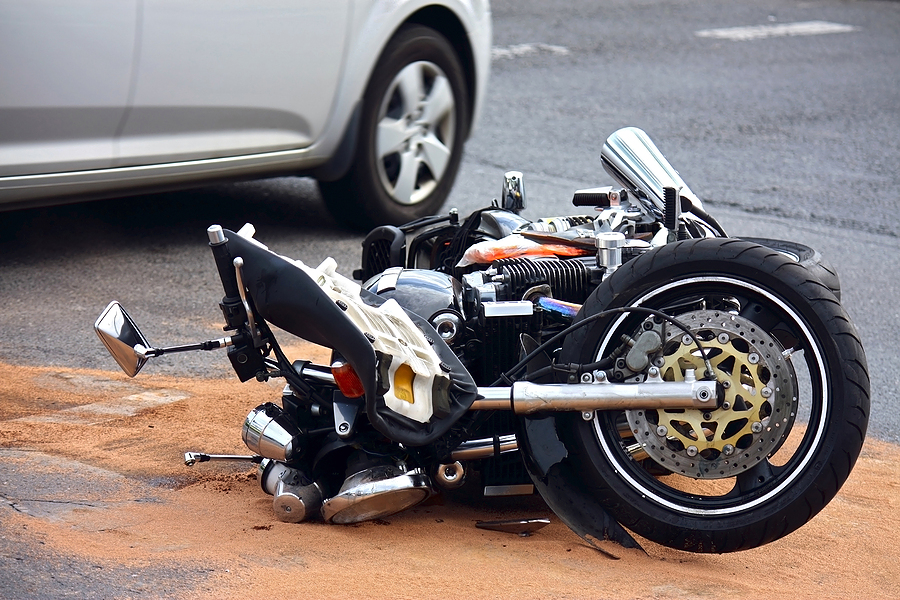Last year saw little to no progress in reducing the number of fatal motorcycle crashes around the country, making this one of the few areas in highway safety where progress has been disappointing.
The Governors Highway Safety Association is reporting that motorcycle fatalities remained at about 4,500 in 2011 for all 50 states and the District of Columbia, the same level as 2010.
Meanwhile, the National Highway Traffic Safety Administration recently projected that overall motor vehicle fatalities declined 1.7 percent in 2011, reaching their lowest level since 1949.
Comparing the first nine months of 2010 to 2011, motorcyclist fatalities decreased in 23 states, while they increased in 26 states and D.C., according to GHSA.
Several states reported notable declines. In Connecticut, for example, motorcycle deaths dropped 37 percent, while in New York and North Carolina they fell 16 and 21 percent, respectively.
According to Barbara J. Fiala, commissioner of the New York State Department of Motor Vehicles, the decrease in fatal motorcycle crashes in that state is due to a mix of enforcement, education and engineering.
“In New York, we are educating motorists to watch for motorcycles, riders to wear bright protective gear to make themselves more visible, and law enforcement officers on conducting efficient and effective motorcycle checks,” Fiala said. “It is encouraging to see that these efforts, which have been conducted with our state and local partners, are making a difference.”
In South Carolina and Texas, motorcycle deaths rose 26 and 16 percent, respectively, while in California they increased 10 percent.
According to Christopher J. Murphy, director of California’s Office of Traffic Safety, the state experienced a dramatic 37 percent decline in motorcycle deaths from 2008 to 2010, so while disappointing, it would not be unexpected to see a smaller decline or even an increase, for 2011.
The GHSA report notes that the economy can influence motorcycle travel in several ways. With the economy strengthening, more people will have disposable income for purchasing and riding motorcycles. At the same time, rising gas prices may cause more individuals to choose motorcycles for transportation because of their fuel efficiency.
GHSA’s report was authored by Dr. James Hedlund of Highway Safety North.
Hedlund compared gas prices, motorcycle registrations, and motorcyclist fatality trends since 1976. He found that for the entire period fatalities closely track registrations, with significant similarities from 1990 to 2008. At the same time, as gas prices increase, fatalities also rise.
Another disturbing trend is the decrease in states with universal helmet laws, according to federal safety officials who rate helmet laws as one of the most effective motorcycle safety strategies. Only 19 states currently require all riders to wear helmets, down from 26 in 1997.
Earlier this year, Michigan repealed its universal helmet law, while similar legislation has been introduced in five other states.
No state has enacted a universal helmet law since Louisiana reinstated its requirement in 2004.
“It is disappointing that we are not making progress in motorcycle safety, particularly as fatalities involving other motorists continue to decline,” said Troy Costales, GHSA chairman.
“As the study notes, the strengthening economy, high gas prices, and the lack of all-rider helmet laws leave me concerned about the final numbers for 2011 and 2012. Every motorcyclist deserves to arrive at their destination safely. These fatality figures represent real people – they’re family, friends and neighbors.”
Costales said the good news is that there are effective strategies that, if implemented, can make a difference in preventing crashes and fatalities involving motorcyclists. Specifically, the GHSA report recommends states address five issues:
- Increase helmet use: Helmets are proven to be 37 percent effective at preventing fatal injuries to motorcycle operators and 41 percent effective for passengers. NHTSA estimates that helmets saved 1,829 motorcyclists’ lives in 2008 and another 822 of the unhelmeted motorcyclists who died in that year would have survived had they worn helmets.
- Reduce alcohol impairment: In 2010, 29 percent of fatally injured riders had a blood alcohol concentration at or above the legal limit of .08, the highest of all motorists.
- Reduce speeding: According to the most recent data, 35 percent of motorcycle riders involved in fatal crashes were speeding, and more than half did not involve another vehicle.
- Provide motorcycle operator training to all who need or seek it: While all states currently offer training programs, some courses may not be provided at locations and times convenient for riders.
- Encourage all drivers to share the road with motorcyclists: According to NHTSA, when motorcycles crash with other vehicles, the latter usually violates the motorcyclist’s right of way. Many states conduct “share the road” campaigns to increase awareness of motorcycles.
Topics Auto New York Training Development
Was this article valuable?
Here are more articles you may enjoy.



 Law Firm Faces Sanctions for Failing to Vet Ugandan Claims in $6B 3M Case
Law Firm Faces Sanctions for Failing to Vet Ugandan Claims in $6B 3M Case  Consumer Acceptance of Telematics Widens, Says Survey
Consumer Acceptance of Telematics Widens, Says Survey  SIAA Announces Strategic Partnership With Progressive
SIAA Announces Strategic Partnership With Progressive  Supreme Court Rejects Challenge to $2.46B Boy Scouts Sex Abuse Settlement
Supreme Court Rejects Challenge to $2.46B Boy Scouts Sex Abuse Settlement 

